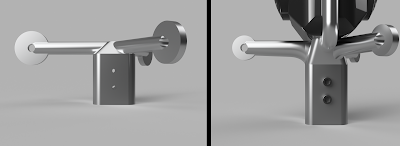Back in May 2016, I wrote a post describing the geographical composition of my audience as I crossed 10,000 readers. I had every intention of refreshing the data periodically, perhaps as I hit 25,000. Well, I should have checked the stats sooner, as not only did I blow by 25,000, but I should hit 40,000 in a few weeks!
The total today stands at 37,419. As I did back in May, allow me to give some color, followed by some awards to you, my dear readers...
For starters, here are some basic stats:
And here is the geographical breakdown:
Back in May I pointed out the curious (to me, anyway) fact that the highest source of readers outside the USA was Pakistan. Mystery solved: In the description of the blog for Google's search engine, I had included the keyword "bang bang." This is a reference to the particular type of control algorithm I embedded into the flight computer's autopilot function, explained here. It was an innocent but fateful mistake, as folks in Pakistan apparently search for popular Bangladeshi celebrities using the word "bang" followed by a name, and for whatever twisted reason harbored by its nefarious AI, Google was returning a link to the HAPP Blog amidst the search results. I know this to be true because Google shows me the search terms used by those who clicked through to the HAPP blog website!
For those curious, the #1 most searched-for Bangladeshi celebrity by those who also visited the HAPP blog is this lovely person:
Alas, with the "bang" reference deleted, the Pakistanis have fallen out of the Top 5 (although someone apparently has enough spare time to continue visiting the blog). The crown now belongs to France! Here's a special tribute to mark the occasion:
Finally, I simply must give an honorable mention to a recent newcomer on the list. I have ZERO idea how folks in Oman found this blog, but my dear Omani readers - I salute you!
The total today stands at 37,419. As I did back in May, allow me to give some color, followed by some awards to you, my dear readers...
For starters, here are some basic stats:
- Top posts: (1) Valves and pneumatics, (2) Controls finale
- Top referring site: (1) Facebook, (2) Google
- Top browser: (1) Chrome, (2) Safari
- Top OS: (1) Mac, (2) Android
And here is the geographical breakdown:
Back in May I pointed out the curious (to me, anyway) fact that the highest source of readers outside the USA was Pakistan. Mystery solved: In the description of the blog for Google's search engine, I had included the keyword "bang bang." This is a reference to the particular type of control algorithm I embedded into the flight computer's autopilot function, explained here. It was an innocent but fateful mistake, as folks in Pakistan apparently search for popular Bangladeshi celebrities using the word "bang" followed by a name, and for whatever twisted reason harbored by its nefarious AI, Google was returning a link to the HAPP Blog amidst the search results. I know this to be true because Google shows me the search terms used by those who clicked through to the HAPP blog website!
For those curious, the #1 most searched-for Bangladeshi celebrity by those who also visited the HAPP blog is this lovely person:
 |
| Apu Biswas, Bangladeshi actress |
Alas, with the "bang" reference deleted, the Pakistanis have fallen out of the Top 5 (although someone apparently has enough spare time to continue visiting the blog). The crown now belongs to France! Here's a special tribute to mark the occasion:
 |
| Vive la France! |
Finally, I simply must give an honorable mention to a recent newcomer on the list. I have ZERO idea how folks in Oman found this blog, but my dear Omani readers - I salute you!









